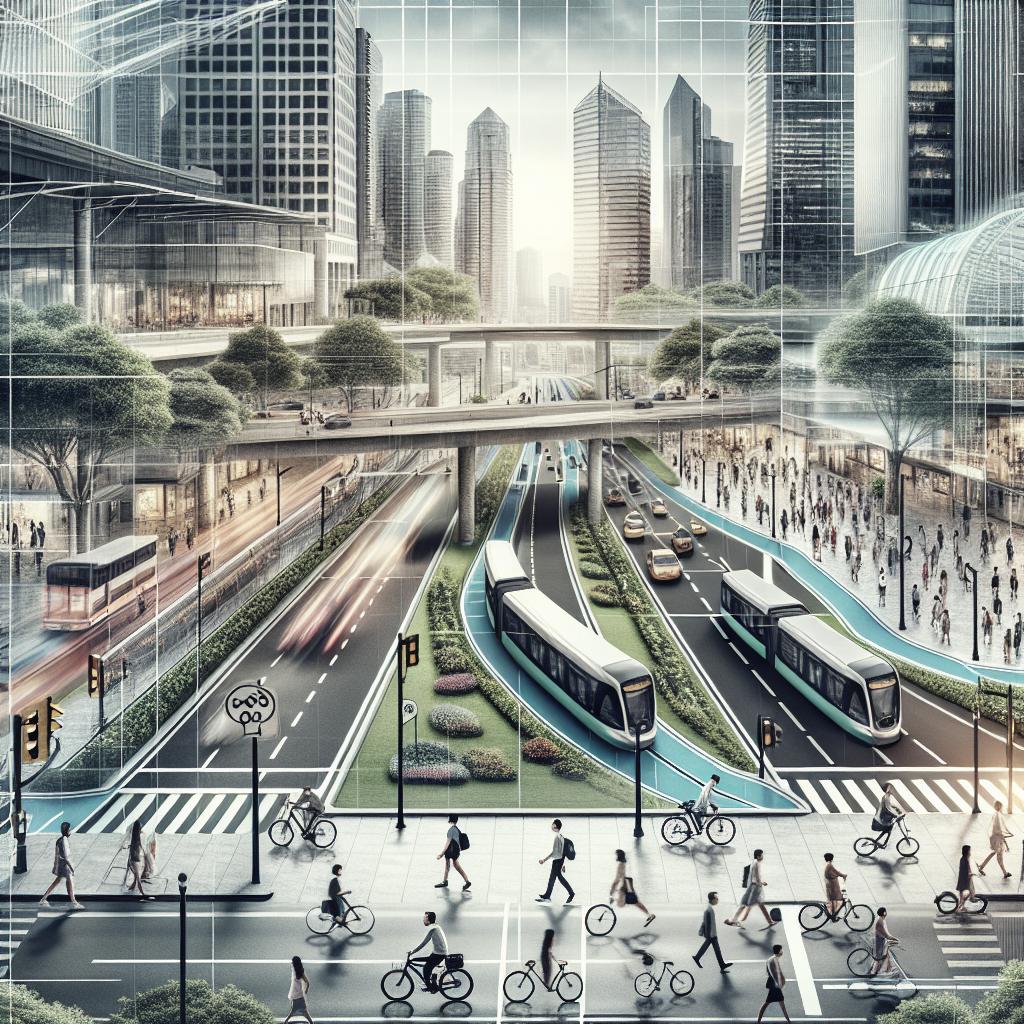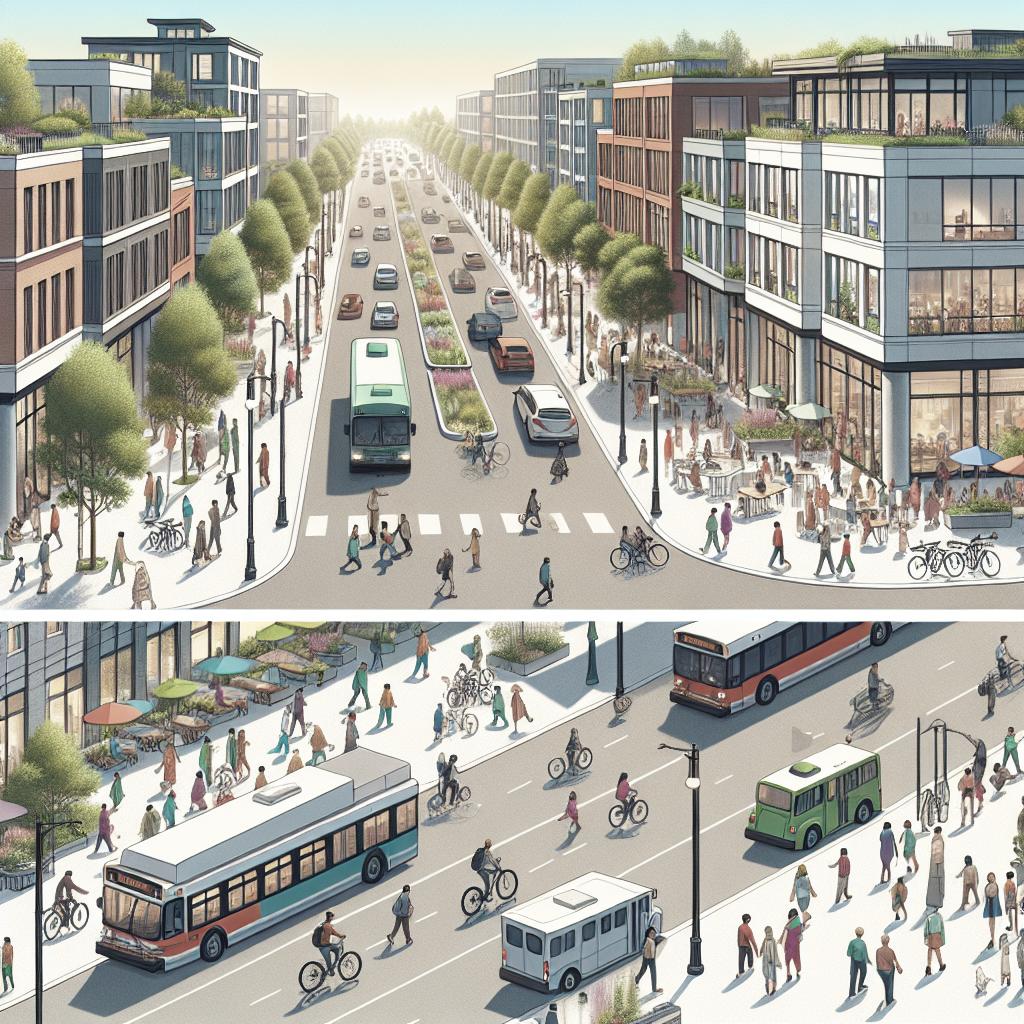<>
“`
Introduction to Active Transportation
Active transportation, including walking and cycling, has emerged as a critical component in the push toward healthier, more sustainable urban living. As cities around the globe grapple with increasing traffic congestion, air pollution, and public health crises, promoting active transportation offers a multifaceted solution. This blog post explores the importance of active transportation, discusses the public health implications, highlights the benefits, and provides practical tips for integrating walking into daily life. Additionally, it examines the transformation of public spaces to support active transportation and reviews successful case studies. Finally, an FAQ section will address common questions regarding active transportation.
The Implications of Active Transportation for Public Health
Active transportation directly impacts public health by encouraging regular physical activity, which is crucial for preventing chronic diseases such as obesity, heart disease, diabetes, and hypertension. As more people engage in walking or cycling, overall community health improves, reducing the burden on healthcare systems. Furthermore, active transportation leads to lower levels of air pollution, which is often linked to respiratory issues and other health problems. Fewer cars on the road mean fewer emissions, creating cleaner air and a healthier environment for urban dwellers. This shift not only enhances individual health but also promotes a sustainable and livable urban ecosystem.
The Case for Active Transportation: Benefits and Advantages
Beyond the obvious health benefits, active transportation offers numerous advantages, including environmental, economic, and social improvements. Environmentally, reducing reliance on vehicles lowers greenhouse gas emissions and mitigates the urban heat island effect, leading to more sustainable cities. Economically, active transportation helps save costs for individuals and governments. Individuals save on fuel, car maintenance, and healthcare expenses, while governments spend less on infrastructure repairs and healthcare services. Additionally, walkable and bike-friendly areas often experience increased local business activity, boosting the economy. Socially, active transportation fosters a sense of community and improves the quality of life. Enhanced streetscapes make neighborhoods more attractive, safer, and more cohesive, contributing to stronger social ties and improved mental well-being.
Encouraging Walking as a Daily Habit: Practical Tips and Strategies
To integrate walking into daily routines, start small by setting achievable goals, like walking to nearby stores or taking short strolls during breaks. Gradually increase your walking distance and frequency as it becomes a more established habit in your life. Utilize technology by using apps that track steps and provide motivation through challenges and rewards systems. Additionally, find walking buddies or join local walking groups to make the activity more social and enjoyable. This can reinforce walking as a regular, enjoyable, and social activity rather than a chore. Urban planning also plays a significant role. City planners can design pedestrian-friendly paths and install adequate signage to encourage walking. Moreover, well-maintained sidewalks, pedestrian-friendly traffic signals, and shaded pathways make walking more convenient and attractive.
Transforming Public Spaces to Promote Active Transportation
Transforming public spaces is essential to promoting active transportation. City governments can start by redesigning streetscapes to prioritize pedestrians and cyclists over vehicles. This includes creating safe bike lanes, widening sidewalks, and implementing traffic calming measures like speed bumps and pedestrian zones. Green spaces and public parks also play a crucial role. By providing attractive and accessible outdoor areas, cities can encourage people to spend time outside, increase their physical activity, and engage with the community. Public transportation systems should be integrated with active transportation infrastructure. Easy access to bus stops and train stations, combined with secure bike parking facilities, can encourage people to use a mix of transportation modes, further reducing the reliance on cars and promoting a sustainable lifestyle.
Case Studies: Successful Implementations of Active Transport Avenues
Several cities around the world have successfully implemented active transportation initiatives. For example, Copenhagen, Denmark, is known for its extensive cycling infrastructure, with over 390 kilometers of designated bike lanes. This has significantly increased the number of cyclists and improved public health. Portland, Oregon, is another excellent example, where the city has invested in developing bike-friendly infrastructure and pedestrian paths. As a result, Portland has seen a substantial rise in active transportation, reducing traffic congestion and promoting a healthier lifestyle. In Barcelona, Spain, the introduction of ‘superblocks’—car-free zones—has transformed the urban landscape. This initiative has drastically reduced air pollution, noise, and traffic accidents, making the city more livable and promoting an active lifestyle among residents.
Lessons Learned
| Aspect | Details |
|---|---|
| Public Health Benefits | Prevents chronic diseases, improves air quality, reduces healthcare burden. |
| Environmental Benefits | Reduces greenhouse gas emissions, mitigates urban heat island effect. |
| Economic Benefits | Saves costs on fuel, maintenance, healthcare, boosts local economy. |
| Social Benefits | Enhances community sense, improves quality of life, fosters social cohesion. |
| Practical Tips for Walking | Set small goals, use tracking apps, find walking buddies, join groups. |
| Transforming Public Spaces | Redesign streetscapes, create green spaces, integrate public transport. |
| Successful Implementation Examples | Copenhagen, Portland, Barcelona showcasing biking lanes, superblocks. |
FAQs:
Q1. What is active transportation?
A1. Active transportation refers to any form of human-powered transportation, such as walking, cycling, or using a wheelchair.
Q2. How can active transportation help promote physical activity?
A2. Active transportation incorporates physical activity into daily routines, making it easier to achieve recommended exercise levels and improve fitness.
Q3. What are the benefits of using public transportation?
A3. Benefits include reduced traffic congestion, lower emissions, cost savings, and increased physical activity by walking to and from transit stops.
Q4. How can I make walking a daily habit?
A4. Start with small goals, use technology for motivation, find walking partners, and incorporate walking into daily routines.
Q5. What are the health benefits of walking?
A5. Health benefits include improved cardiovascular health, weight management, reduced risk of chronic diseases, better mental health, and enhanced overall well-being.
Q6. What are the environmental benefits of active transportation?
A6. Environmental benefits include reduced greenhouse gas emissions, less air pollution, and a decreased urban heat island effect.
Q7. What are the economic benefits of active transportation?
A7. Economic benefits include savings on fuel and healthcare costs, reduced infrastructure repair expenses, and a boost in local business activity due to increased foot traffic. “`


